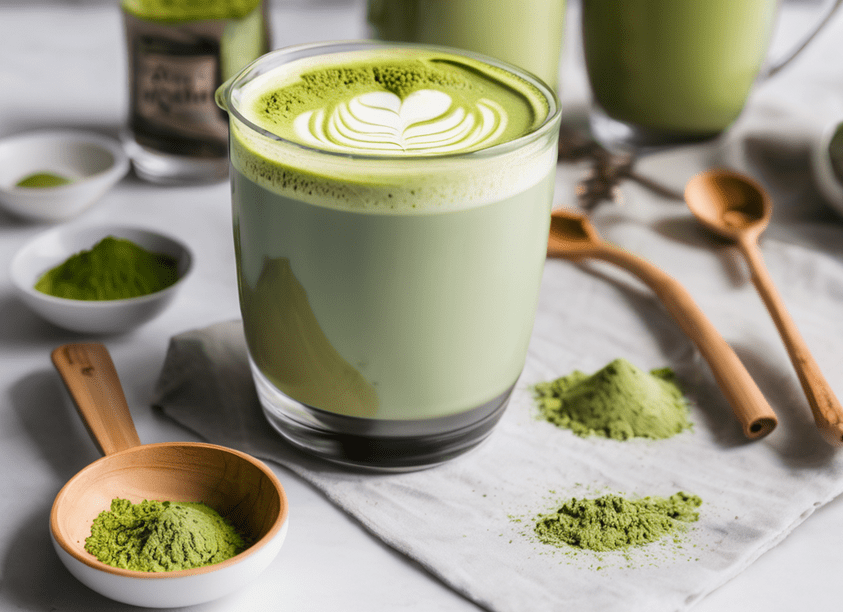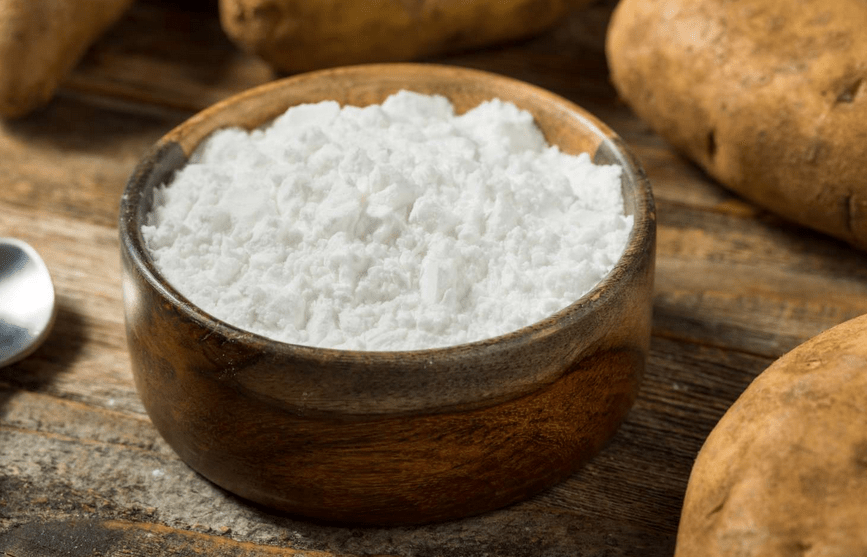HEALTH & LIFESTYLE
Five Things You Use Everyday In Your House That Can Cause Cancer
Published
5 months agoon
By
1oo9t
Many everyday household items contain chemicals and substances that could potentially increase cancer risk. Understanding these risks is vital for reducing exposure and making informed choices about the products we use. Here are five common household items that may contribute to cancer risk:
1.Cleaning Products
Household cleaning products such as bleach, disinfectants, and air fresheners often contain chemicals that can be harmful if inhaled or absorbed through the skin. These products frequently include volatile organic compounds (VOCs), which can…Click Here To Continue Reading>> …Click Here To Continue Reading>>
irritate the respiratory system and may be carcinogenic with long-term exposure. For instance, formaldehyde, a common ingredient in some cleaning products, is classified as a carcinogen by the International Agency for Research on Cancer (IARC). Additionally, certain air fresheners emit phthalates, which are linked to hormone disruption and cancer.
2. Plastic Containers and Bottles READ FULL STORY HERE>>>CLICK HERE TO CONTINUE READING>>>
Many plastic containers and bottles, especially those not marked as BPA-free, can leach harmful chemicals like Bisphenol A (BPA) into food and drinks. BPA is an endocrine disruptor that mimics estrogen, potentially interfering with hormonal functions. Long-term exposure to BPA has been associated with a higher risk of breast and prostate cancers. Even plastics labeled as “microwave safe” can release harmful chemicals when heated, increasing the risk of cancer.
3. Non-Stick Cookware
Non-stick cookware, particularly those coated with polytetrafluoroethylene (PTFE), also known as Teflon, can emit toxic fumes when overheated. These fumes may contain perfluorooctanoic acid (PFOA), a chemical associated with various cancers, including kidney and testicular cancer. Although PFOA has been largely phased out in many regions due to health concerns, older cookware might still pose a risk. To reduce exposure, replace damaged non-stick cookware and avoid using it at high temperatures.
Related
You may like
HEALTH & LIFESTYLE
Do A Woman’s Private Part Get Looser After Having Too Much Sex.
Published
18 hours agoon
May 6, 2025By
1oo9t
The walls of a woman’s concealed organs, which are composed of extremely connective tissue, receive sufficient blood flow. This location is very nerve-wracking. Since skin cells cover the vulva, it resembles skin more than a secret organ. It also possesses the most nerves and blood arteries of any area of the body. Like other body parts, hidden organs and vulva can expand and contract over time until their collagen and elastin no longer regenerate. This is due to their attractiveness.
Its expansion spawned so-called “free” classified ad websites. People have dreams about female body parts, such as how “comfortable” or “remote” they are, according to Healthline. Despite the lack of evidence and clear falsity of these assertions, they continue to circulate. It is crucial that women learn the truth about these beliefs since they can damage their feeling of self and self-worth. Take a deep breath and continue reading to learn more about free-floating organs and how they may impact you if you begin to feel them…Click Here To Continue Reading>> …Click Here To Continue Reading>>
READ FULL STORY HERE>>>CLICK HERE TO CONTINUE READING>>>
This illusion was constructed over a lengthy period of time to prevent women from forming too many close connections or becoming too close before marriage. Even excessive intimacy does not make organs that aren’t designed to be “free,” according to the Healthline website. Yet, there are a variety of circumstances that could temporarily extend or weaken the pelvic muscles. At roughly six months, especially for younger mothers, secret organs return to their normal shape following pregnancy.
Yet, a woman’s pelvic floor muscles are more likely to be affected over time by childbirth. The body’s muscles lose strength gradually over time. Over time, the pelvic floor muscles lose their capacity to cooperate and move rapidly. With menopause and a decline in estrogen levels, private organs may feel drier and work less. Not much time will have passed by the time everything is in order. Doctors advise elderly adults to perform Kegel exercises in order to strengthen and increase the flexibility of their pelvic floor muscles. This will benefit them even if they do not typically experience issues with intimacy or accidents.
Related
HEALTH & LIFESTYLE
12 Best Homemade Matcha Latte Recipe You Should Try
Published
2 days agoon
May 5, 2025By
1oo9t
Have you ever found yourself staring at a $7 matcha latte receipt and thinking, “I could probably make this at home”? You’re right. As someone who once spent over $150 monthly on café matcha lattes, I’ve spent years perfecting homemade versions. This not only saves money but often tastes even better than coffee shop offerings. This article will discuss 12 best homemade Matcha Latte recipes. Each recipe has been tested and refined in my home kitchen, with feedback from friends and family.
What is Matcha Latte?
Matcha is a type of finely ground, high-quality green tea powder that originates from Japan. Unlike traditional green tea, where the leaves are steeped in water and then removed, matcha powder is made by grinding the entire tea leaf into a fine powder…Click Here To Continue Reading>> …Click Here To Continue Reading>>
This unique process gives matcha several distinct advantages. First, by consuming the entire leaf, you’re able to reap the full benefits of the tea’s antioxidants, vitamins, and amino acids, including the renowned L-theanine.
Secondly, the vibrant green color of matcha is a visual indicator of its high chlorophyll content, which is a testament to its nutrient-rich nature.
Top 10 Health Benefits of Matcha Latte
1. Sustained Energy and Focus
As any matcha aficionado will tell you, the secret to this powder’s energizing prowess lies in its unique chemical composition. Unlike the quick jolt and subsequent crash associated with coffee, matcha provides a gentle, long-lasting boost. This is thanks to its unique blend of caffeine and L-theanine.
By sipping on a matcha latte, you can enjoy a steady flow of energy that will keep you productive and focused throughout the day, without the unpleasant jitters or mid-afternoon slump. This makes it an excellent alternative for those seeking a healthier, more sustainable caffeine source.
2. Immune-Boosting Antioxidants
Matcha is renowned for its impressive antioxidant content. Studies have show that it can boast up to 137 times the antioxidants of traditional green tea. These powerful plant compounds can help support overall immune function and reduce the risk of chronic disease.
Plus, you’re providing your body with a concentrated dose of these protective antioxidants, including the revered catechin known as EGCG. This can translate to enhanced resistance to illness, as well as a reduced risk of conditions like cancer, heart disease, and Alzheimer’s.
3. Enhanced Detoxification
The chlorophyll-rich matcha powder used in lattes is a natural detoxifier, helping to bind toxins and heavy metals in the body and facilitating their elimination. This can promote a healthier digestive system, support liver function, and even help to purify the blood.
Plus, sipping on a matcha latte can be a delicious way to support your body’s natural detoxification processes. This can also help improve overall well-being, increase energy, and provide a greater sense of vitality.
4. Improved Metabolism and Weight Management
Matcha is often lauded for its ability to support healthy weight management, and the matcha latte is no exception. Caffeine and EGCG in matcha have been shown to improve metabolism, helping the body burn fat more efficiently.
Furthermore, the L-theanine in matcha can help curb cravings and promote feelings of fullness, making it easier to maintain a healthy weight.
5. Reduced Stress and Anxiety
In our fast-paced, high-stress world, finding ways to unwind and de-stress is essential for our mental and physical well-being. Here, the matcha latte shines thanks to its unique ability to induce a state of calm focus.
The L-theanine in matcha has been studied for its ability to reduce anxiety and promote relaxation without causing drowsiness. Sipping on a matcha latte can be a mindful, restorative ritual that helps you to quiet the mind.
6. Improved Cardiovascular Health
Matcha’s antioxidant and anti-inflammatory properties don’t just benefit the immune system – they can also have a positive impact on cardiovascular health. Studies have shown that the compounds in matcha can help to lower cholesterol levels, reduce blood pressure, and improve blood flow.
By making the matcha latte a regular part of your lifestyle, you may be able to reduce your risk of heart disease, stroke, and other cardiovascular complications. It’s a simple yet powerful way to nourish your ticker and support long-term heart health.
7. Radiant Skin and Anti-Aging Benefits
The antioxidants in matcha don’t just work their magic on the inside – they can also have a transformative effect on the skin. The EGCG and other potent plant compounds in matcha can help protect the skin from environmental stressors, reduce inflammation.
Sipping on a matcha latte can provide your skin with a wealth of nourishing benefits. It can help diminish the appearance of fine lines and wrinkles to promote a youthful, radiant glow. It’s a natural, holistic approach to skincare that can truly help you put your best face forward.
8. Enhanced Bone and Dental Health
Matcha is a rich source of several essential minerals, including calcium, iron, and manganese. These nutrients play a crucial role in maintaining strong, healthy bones and teeth. This makes the matcha latte a surprisingly beneficial beverage for supporting skeletal and oral health.
Furthermore, the antibacterial properties of matcha can help to inhibit the growth of harmful oral bacteria, reducing the risk of cavities and gum disease.
9. Improved Cognitive Function
If you’re looking to give your brain a boost, the matcha latte may be the perfect pick-me-up. The unique combination of caffeine and L-theanine in matcha can enhance cognitive function, improving memory, reaction time, and overall mental acuity.
Sipping on a matcha latte can help you stay sharp, focused, and productive throughout the day. This makes it an excellent choice for students, professionals, or anyone who needs to tackle mentally demanding tasks.
10. Versatile and Delicious
Perhaps one of the most appealing aspects of the matcha latte is its sheer versatility. Beyond the classic frothy, creamy version, this vibrant beverage can be easily customized to suit a wide range of tastes and dietary preferences.
Whether you prefer your latte iced, sweetened with honey, or blended with plant-based milk, the matcha latte offers endless opportunities for experimentation and personal expression. It’s a delicious way to enjoy the myriad benefits of matcha while satisfying your cravings for a comforting, indulgent treat.

Essential Matcha Latte Equipment
While specialized equipment can enhance your matcha experience, many of these recipes can be made with tools you likely already have in your kitchen. Here’s what’s helpful to have on hand:
Basic equipment (for most recipes):
- Small whisk or fork
- Measuring spoons
- Saucepan or microwave-safe container for heating milk
- Mug or glass
Elevated experience (optional but recommended):
- Bamboo matcha whisk (chasen)
- Small sifter for matcha powder
- Matcha bowl (chawan) or wide cup for whisking
- Milk frother or French press for creating foam
- Kitchen thermometer for precise temperatures
12 Best Homemade Matcha Latte Recipes
1. Traditional Ceremonial Matcha Latte
This recipe honors the traditional Japanese approach to matcha preparation while adding just enough milk to create a latte experience. It’s my go-to morning ritual that connects me to matcha’s cultural heritage.
Ingredients:
- 1 teaspoon ceremonial-grade matcha powder
- 2 ounces hot water (175°F/80°C, not boiling)
- 6 ounces milk of choice (dairy, oat, or almond work beautifully)
- ½ teaspoon honey or maple syrup (optional)
Instructions:
- Sift matcha powder into a wide cup or traditional matcha bowl to remove any clumps.
- Add the hot water (remember: hot but not boiling to preserve matcha’s delicate flavor).
- Using a bamboo whisk or small regular whisk, whisk vigorously in a “W” or “M” motion until frothy and no clumps remain (about 30 seconds).
- Heat milk to around 150°F/65°C (hot but not simmering).
- Optional: Froth the milk using a milk frother, French press, or by shaking in a jar.
- Slowly pour the milk into your matcha while holding back the foam with a spoon.
- Top with the reserved foam and add sweetener if desired.
Pro tip: The temperature matters significantly here—water that’s too hot will make your matcha bitter. If you don’t have a thermometer, bring water to a boil and then let it sit for about 2 minutes before using.
2. Creamy Vanilla Matcha Latte
This was the recipe that finally convinced my coffee-devoted husband to join the matcha side. The vanilla perfectly complements matcha’s natural flavor profile while adding a subtle sweetness.
Ingredients:
- 1½ teaspoons culinary or latte-grade matcha
- 1 ounce hot water (175°F/80°C)
- 8 ounces milk of choice
- ½ teaspoon pure vanilla extract
- 1 tablespoon honey or maple syrup
- Pinch of salt (enhances flavor)
Instructions:
- Sift matcha into a cup and add hot water.
- Whisk until completely smooth with no clumps.
- In a small saucepan, combine milk, vanilla, sweetener, and salt.
- Heat gently until steaming but not boiling, whisking occasionally.
- Pour the milk mixture into your matcha and stir to combine.
- For extra indulgence, top with a sprinkle of vanilla bean powder.
Variation: For a vanilla bean version, substitute the extract with ¼ vanilla bean, scraped and simmered with the milk, then strained before adding to the matcha.
3. Iced Matcha Latte Perfection
On warm summer mornings, this refreshing iced version has replaced my standard hot latte. The key is creating a concentrated matcha base that won’t get diluted by the ice.
Ingredients:
- 1½ teaspoons matcha powder
- 1 ounce hot water (175°F/80°C)
- 1 tablespoon honey or simple syrup
- 8 ounces cold milk of choice
- Ice cubes
- Optional garnish: lemon slice or mint sprig
Instructions:
- Sift matcha into a wide cup or bowl.
- Add hot water and sweetener, then whisk vigorously until frothy and smooth.
- Fill a tall glass with ice cubes.
- Pour the matcha mixture over the ice.
- Slowly pour in cold milk.
- Stir gently to create a layered effect or mix thoroughly for uniform flavor.
Pro tip: For an extra aesthetic touch, freeze matcha in ice cube trays with a bit of water to create matcha ice cubes that won’t dilute your drink as they melt. READ FULL STORY HERE>>>CLICK HERE TO CONTINUE READING>>>
4. Coconut Matcha Latte
During a trip to Hawaii, I discovered the heavenly combination of coconut and matcha. This recipe brings that tropical escape right to your kitchen.
Ingredients:
- 1 teaspoon matcha powder
- 1 ounce hot water
- 6 ounces coconut milk (canned coconut milk, diluted by half with water)
- 1 teaspoon coconut sugar or honey
- ¼ teaspoon coconut extract (optional)
- Toasted coconut flakes for garnish
Instructions:
- Prepare matcha with hot water as in previous recipes.
- Warm coconut milk mixture with sweetener until steaming.
- Combine matcha and coconut milk mixture.
- Top with toasted coconut flakes.
Serving suggestion: Serve in a coconut shell cup for an authentic tropical experience or special occasion.

5. Maple Cinnamon Matcha Latte
This fall-inspired latte became my Sunday morning treat during the autumn months. The warm spices beautifully balance matcha’s grassiness.
Ingredients:
- 1 teaspoon matcha powder
- 1 ounce hot water
- 8 ounces milk of choice
- 1½ tablespoons pure maple syrup
- ¼ teaspoon ground cinnamon (plus more for dusting)
- Tiny pinch of nutmeg
- Optional: drop of vanilla extract
Instructions:
- Prepare matcha with hot water as usual.
- In a saucepan, combine milk, maple syrup, cinnamon, and nutmeg.
- Heat until steaming, whisking to incorporate spices.
- Pour spiced milk into matcha and stir well.
- Dust with additional cinnamon before serving.
Seasonal variation: During winter holidays, add a tiny pinch of clove or cardamom for a holiday spin.
6. Matcha Mint Chip Latte
Inspired by ice cream flavors, this refreshing combination became an instant favorite among friends during our book club meetings. It’s particularly delightful as an afternoon pick-me-up.
Ingredients:
- 1 teaspoon matcha powder
- 1 ounce hot water
- 8 ounces milk of choice
- ¼ teaspoon peppermint extract (adjust to taste)
- 1 tablespoon honey or simple syrup
- 1 tablespoon dark chocolate chips or cacao nibs
- Optional: fresh mint leaves for garnish
Instructions:
- Melt chocolate chips in a small amount of the milk.
- Prepare matcha with hot water as usual.
- Heat remaining milk with sweetener until steaming.
- Stir in peppermint extract.
- Combine matcha, milk mixture, and melted chocolate.
- Garnish with a fresh mint leaf and a few additional cacao nibs.
Pro tip: For a more intense chocolate experience, add 1 teaspoon of high-quality cocoa powder to the milk while heating.
7. Chai Spiced Matcha Latte
This fusion creation combines the best of two worlds: chai spices and matcha’s earthy goodness. The result is complex, warming, and uniquely satisfying.
Ingredients:
- 1 teaspoon matcha powder
- 1 ounce hot water
- 8 ounces milk of choice
- 1 tablespoon honey or maple syrup
- ¼ teaspoon each: ground ginger, cardamom, and cinnamon
- Pinch of black pepper and clove
- Star anise for garnish (optional)
Instructions:
- Prepare matcha with hot water as usual.
- In a small saucepan, combine milk, sweetener, and spices.
- Heat gently for 5 minutes to infuse flavors without boiling.
- Strain the spiced milk into your matcha mixture.
- Stir well and garnish with a star anise if desired.
Variation: For a deeper flavor, toast the spices in the dry saucepan for 30 seconds before adding milk.

8. Vegan Protein Matcha Latte
After morning workouts, this protein-enhanced version provides sustainable energy and muscle recovery support. It’s become my post-exercise ritual.
Ingredients:
- 1 teaspoon matcha powder
- 1 ounce hot water
- 8 ounces unsweetened almond or pea milk
- 1 scoop (approximately 20g) vanilla plant protein powder
- 1 teaspoon almond butter
- ½ frozen banana (adds creaminess and sweetness)
- Ice cubes
Instructions:
- Prepare matcha with hot water as usual.
- Combine matcha, milk, protein powder, almond butter, and banana in a blender.
- Blend until completely smooth.
- Pour over ice or enjoy immediately for a warm version.
Nutrition boost: Add 1 teaspoon of chia seeds or hemp hearts for added omega-3 fatty acids.
9. Keto-Friendly Matcha Latte
For those following a ketogenic diet, this high-fat, low-carb version provides sustained energy without breaking ketosis. A friend following a keto diet requested this recipe and now makes it daily.
Ingredients:
- 1 teaspoon matcha powder
- 1 ounce hot water
- 6 ounces unsweetened almond milk
- 1 tablespoon MCT oil or coconut oil
- 1 tablespoon grass-fed butter or ghee
- 5-7 drops liquid stevia or monk fruit sweetener
- ¼ teaspoon vanilla extract (optional)
Instructions:
- Prepare matcha with hot water as usual.
- Heat almond milk until steaming but not boiling.
- Combine all ingredients in a blender.
- Blend for 20-30 seconds until frothy and emulsified.
- Serve immediately.
Pro tip: Start with less MCT oil if you’re new to it and gradually increase as your body adjusts.
10. Sugar-Free Matcha Latte
This recipe was developed for a family member with diabetes who wanted to enjoy matcha lattes without blood sugar spikes. It provides sweetness without actual sugar.
Ingredients:
- 1 teaspoon matcha powder
- 1 ounce hot water
- 8 ounces unsweetened milk of choice
- ¼ teaspoon monk fruit extract or sugar-free sweetener of choice
- ¼ teaspoon vanilla extract
- Pinch of cinnamon (enhances perceived sweetness)
Instructions:
- Prepare matcha with hot water as usual.
- Heat milk with sweetener, vanilla, and cinnamon until steaming.
- Combine with matcha and stir well.
Variation: Add a dash of almond extract for additional flavor complexity without adding sugars.

11. Luxurious Dark Chocolate Matcha Latte
This indulgent version has become our special weekend treat—rich, satisfying, and elevating the matcha experience to dessert-like levels while still providing health benefits.
Ingredients:
- 1 teaspoon matcha powder
- 1 ounce hot water
- 7 ounces milk of choice
- 1½ tablespoons high-quality dark chocolate, chopped
- 1 teaspoon honey
- Pinch of sea salt
- Whipped cream for topping (optional)
- Dust of matcha and chocolate shavings for garnish
Instructions:
- Prepare matcha with hot water as usual.
- In a small saucepan, gently heat milk, chocolate, honey, and salt, whisking until chocolate is completely melted.
- Pour chocolate milk mixture into matcha and stir well.
- Top with whipped cream if desired.
- Dust with additional matcha powder and chocolate shavings.
Serving suggestion: Serve in clear glass mugs to showcase the beautiful layers.
12. Celebration Matcha White Chocolate Latte
Created for a friend’s birthday brunch, this festive version has since become my go-to for special occasions and gatherings.
Ingredients:
- 1 teaspoon matcha powder
- 1 ounce hot water
- 8 ounces milk of choice
- 2 tablespoons white chocolate chips or chopped white chocolate
- ¼ teaspoon almond extract
- Whipped cream for topping
- Colored sprinkles or edible flower petals for garnish
Instructions:
- Prepare matcha with hot water as usual.
- In a small saucepan, heat milk gently and add white chocolate, stirring until completely melted.
- Remove from heat and stir in almond extract.
- Combine with the matcha mixture.
- Top with whipped cream and festive garnishes.
Pro tip: For extra visual appeal, rim the mug with a bit of honey and dip in gold sugar or edible glitter before pouring in the latte.
Troubleshooting Your Matcha Latte
Even experienced match makers occasionally encounter challenges. Here are solutions to common matcha latte problems:
Clumpy matcha:
- Always sift your matcha powder before adding liquid
- Use a proper whisking technique (rapid “W” or “M” motions)
- Consider using a bamboo whisk for best results
- Try adding just a few drops of water first to make a paste before adding the rest
Bitter taste:
- Lower your water temperature (never use boiling water with matcha)
- Try a higher-quality matcha powder
- Add a tiny pinch of salt to balance the bitterness
- Ensure a proper ratio of matcha to liquid
Separation in the cup:
- Whisk matcha more thoroughly before adding milk
- Use a blender for difficult-to-mix versions
- Consider adding a small amount of lecithin as an emulsifier for specialty lattes
Related
HEALTH & LIFESTYLE
What is Potato Starch?14 Benefits and Potential Side Effects
Published
2 days agoon
May 5, 2025By
1oo9t
Potato starch – that powdery substance tucked away in kitchen cabinets – deserves way more attention than it gets. It’s not just for thickening gravies! This versatile ingredient has been quietly revolutionizing both cooking techniques and health practices, yet most people barely know what it is.
I’ve spent hours researching this topic, and what I’ve discovered about potato starch might surprise you. From its unique culinary properties to its impressive health benefits, this unassuming powder is worth a second look. This article will explore 14 amazing benefits of potato starch and its potential side effects…Click Here To Continue Reading>> …Click Here To Continue Reading>>
What Exactly IS Potato Starch, Anyway?
Potato starch is exactly what it sounds like – starch extracted from potatoes. But the process is actually kinda fascinating…
Manufacturers start by crushing potatoes, which breaks open their cells and releases tiny starch granules. These granules get washed away from the potato pulp, settle out of solution, and are dried into the fine powder you find on store shelves.
If you’ve ever touched potato starch, you know it feels weirdly silky, almost like baby powder, but slightly different. This super-fine texture is part of what makes it so useful.
The chemistry nerds might appreciate that potato starch has two main components:
- Amylose (20-35%) – mostly straight-chain molecules
- Amylopectin (65-80%) – branched molecules that look like little trees
What’s REALLY interesting, though, is the SIZE of potato starch granules. They’re HUGE compared to other food starches – like 10x bigger than cornstarch granules! This size difference explains many of its unique cooking properties.
Don’t Mix These Up! Potato Starch vs. Potato Flour
OK, this drives me crazy – so many recipes and cooks confuse these two ingredients! They are TOTALLY different things:
Potato starch:
- Just the starch component
- Super white and powdery
- Basically no flavor (seriously, try a tiny taste)
- Mainly used as a thickener & texture-improver
Potato flour:
- Made from whole dried potatoes ground up
- Yellowish and not as fine
- Tastes potato-y (duh)
- Used when you WANT potato flavor
I’ve seen so many cooking disasters when people swap these! Your delicate sauce will suddenly taste like a potato bomb exploded in it if you use the wrong one…
How It Stacks Up Against Other Starches
I’ve experimented with different starches in my kitchen, and potato starch definitely has its own personality:
- It starts thickening at cooler temperatures than cornstarch (around 140°F vs. 180°F), which can be super handy for delicate sauces
- Makes crystal-clear gels instead of slightly cloudy ones like cornstarch does
- Doesn’t hold up to long cooking – it’ll break down and get thin again (learned this the hard way…)
- Handles freezing/thawing cycles way better than most starches

14 Amazing Health Benefits of Potato Starch
1. Helps Balance Blood Sugar
This is probably the most researched benefit of potato starch. It contains resistant starch, which, unlike regular starches, doesn’t cause big blood sugar spikes.
A fascinating study showed that animals eating potato starch had much better insulin sensitivity than those given other starches. They also gained less weight and fat, which is pretty remarkable.
Human research backs this up, too. A small but intriguing 2020 study found that people consuming resistant starch-enriched potatoes had lower fasting glucose levels. This could be huge for anyone watching their blood sugar!
2. Your Gut Bacteria LOVE This Stuff
Potato starch is basically a feast for your beneficial gut bacteria. It works as a prebiotic, feeding the good microbes in your intestines.
What’s really cool is that potato resistant starch seems especially good at increasing butyrate production compared to other resistant starches. Butyrate is super important – it’s like a superfood for the cells lining your colon.
The effectiveness does depend on having the right bacteria to begin with – specific “primary degraders” that start breaking down the resistant starch. This is why some people notice more dramatic benefits than others when adding it to their diet.

3. Lifesaver for Gluten-Free Cooking
If you’ve ever tried gluten-free baking, you know the struggle… so many recipes turn out dry, crumbly, or just plain weird. Potato starch helps solve these problems!
Unlike some gluten-free flours with strong flavors (I’m looking at you, chickpea flour!), potato starch is neutral-tasting. It helps create structure and moisture in gluten-free baking without adding any competing flavors.
Most professional gluten-free bakers use it as part of their flour blends because it helps mimic some of the properties that gluten normally provides. For someone with celiac disease or gluten sensitivity, potato starch can be a game-changer.
4. Culinary Magic Tricks
In the kitchen, potato starch has some pretty amazing applications:
For stir-fry sauces, potato starch creates that restaurant-quality silky texture that’s hard to achieve at home. Just remember to mix it with COLD water first (never hot!) before adding to your dish.
When you’re making fried chicken or fish, a light coating of potato starch creates insane crispiness that stays crunchy way longer than flour coatings. This is why it’s so common in Asian-style fried foods – that perfect crunch!
What I love most is how it works at lower temperatures than cornstarch, making it perfect for delicate sauces that can’t handle much heat. No more broken sauces!
5. Your Colon Will Thank You
Let’s talk about something usually ignored at dinner parties: colon health. The resistant starch in potato starch acts like a janitor for your large intestine.
When it reaches your colon, friendly bacteria ferment it, creating short-chain fatty acids, especially butyrate. This isn’t just any byproduct – it’s literally the main energy source for the cells lining your colon walls.
Research suggests this process helps maintain a healthy gut lining and may reduce inflammation in the digestive tract. While we need more human studies, the evidence so far points to potential protective effects for colon health.

6. Weight Management Helper
I was skeptical about this one at first, but the research is pretty interesting. Several studies show that resistant starch may help with weight management by increasing feelings of fullness after eating.
The science makes sense: resistant starch affects gut hormones involved in hunger signaling. Plus, since it resists digestion in the small intestine, it provides fewer usable calories than regular starch – about 2 calories per gram versus 4 calories for regular starch.
It’s definitely not a miracle weight loss powder (nothing is!), but these small differences could add up over time as part of a balanced approach to eating.
7. Surprising Immune System Connection
Did you know that about 70% of your immune system lives in your gut? This connection helps explain why gut health affects overall immunity.
By supporting a healthy microbiome, potato starch indirectly helps your immune function. Those beneficial bacteria facilitated by resistant starch help train and regulate immune cells, maintaining a crucial balance.
While no one should claim potato starch prevents illness, improving gut health is increasingly recognized as an important factor in maintaining healthy immune function.
8. Potential Mood Booster
The gut-brain connection is one of the most fascinating areas of health research right now. Your digestive system actually communicates with your brain through multiple pathways!
Research shows gut bacteria influence neurotransmitter production, including serotonin, our “happiness hormone.” Surprisingly, about 90% of serotonin is produced in the gut, not the brain.
While studies directly linking potato starch to mood improvements are still emerging, the connection between gut health and mental well-being is becoming clearer. It’s not a replacement for proper mental health care, but supporting gut health could be part of a comprehensive approach.

9. Heart-Friendly Properties
Several studies suggest that resistant starch may support heart health by helping manage cholesterol levels. Research indicates it might help lower “bad” LDL cholesterol while supporting healthy “good” HDL levels.
This likely happens because the short-chain fatty acids produced during fermentation influence how the liver processes cholesterol. Additionally, the anti-inflammatory properties might benefit heart health, since chronic inflammation is a known cardiovascular risk factor. READ FULL STORY HERE>>>CLICK HERE TO CONTINUE READING>>>
The improved insulin sensitivity associated with resistant starch is another plus for heart health, as insulin resistance is linked to increased cardiovascular problems.
10. Fights Inflammation
One benefit that doesn’t get enough attention is potato starch’s anti-inflammatory potential. Studies show it may help reduce systemic inflammation through multiple mechanisms.
The short-chain fatty acids produced during fermentation have direct anti-inflammatory properties. Plus, by improving intestinal barrier function, resistant starch helps prevent “leaky gut” issues that can allow inflammatory compounds to enter the bloodstream.
Given that chronic inflammation drives so many modern health problems, from arthritis to heart disease, this benefit could have wide-reaching implications.
11. Premium-Grade Prebiotic
While many prebiotics feed gut bacteria indiscriminately, potato starch shows interesting selectivity. It preferentially nourishes beneficial bacteria like Bifidobacteria while providing little food for potentially harmful species.
This selective feeding helps create a more balanced gut environment dominated by beneficial bacteria. Unlike some prebiotic supplements that can cause significant digestive upset, potato starch tends to be gentler when introduced gradually.
The prebiotic effects happen mainly in the large intestine, which makes it especially good for colon health while minimizing digestive discomfort in the small intestine.
12. Beyond Food: Industrial Uses
Potato starch isn’t just for eating – it has fascinating industrial applications too! Textile manufacturers use it as a sizing agent that strengthens yarns during weaving and gives fabrics body and stiffness.
The paper industry depends on it to improve paper strength and surface properties. Ever noticed how high-quality paper has that perfect writing surface? Thank you, potato starch!
It’s also used in various adhesives and glues because of its excellent binding properties. These diverse applications show just how versatile this simple ingredient really is.

13. Eco-Friendly Alternative
With growing environmental concerns, potato starch offers some exciting sustainable alternatives to petroleum-based products.
Those dissolving packing peanuts? Often made from potato starch! Unlike Styrofoam, which persists in landfills for generations, potato starch-based packaging naturally decomposes.
Some companies now make potato starch films and coatings that can replace plastic wraps in certain applications. For environmentally conscious consumers, these alternatives represent a small but meaningful step toward sustainability.
14. Metabolic Health Supporter
Beyond just blood sugar management, potato starch seems to positively influence overall metabolism. Research shows that people consuming resistant starch-enriched foods demonstrate improved markers of metabolic health.
These improvements include better fasting glucose profiles, trends toward improved insulin sensitivity, and beneficial changes in how the body processes carbohydrates overall.
For people with metabolic syndrome or prediabetes, these effects could be particularly valuable as part of a comprehensive approach to metabolic health.
Potential Side Effects and Considerations
Despite all these benefits, potato starch isn’t perfect for everyone. Here are some important considerations:
1. The Adjustment Period is REAL
I won’t sugarcoat this – when you first start using potato starch for its resistant starch benefits, you might experience some, um, musical effects. Gas and bloating are common initial reactions as your gut bacteria adjust.
You should start with a tiny amount – like 1/4 teaspoon, not tablespoons! – and gradually increasing over weeks helps minimize discomfort. Most people find these symptoms fade significantly as their gut microbiome adapts.
Staying hydrated also helps manage any digestive symptoms. If discomfort persists beyond a few weeks, potato starch might not be right for your individual system.
2. Watch Out for Nightshade Sensitivity
While potato allergies aren’t super common, they definitely exist. Anyone with a known potato allergy or sensitivity to nightshade plants (potatoes, tomatoes, eggplants, peppers) should avoid potato starch.
Symptoms can range from mild skin rashes to serious allergic reactions in sensitive individuals. For those with autoimmune conditions that might be aggravated by nightshades, alternatives like green banana flour offer similar resistant starch benefits without the nightshade connection.
3. Not Exactly a Nutritional Powerhouse
Despite its functional benefits, potato starch isn’t nutritionally impressive on its own. It’s almost entirely carbohydrates with basically no vitamins, minerals, protein, or fat.
It’s best viewed as a functional ingredient rather than a nutrient source – something you add for specific benefits rather than nutritional content. It should complement, not replace, nutrient-dense whole foods in your diet.
4. GMO Considerations
Some potato starch products may come from genetically modified potatoes. Varieties like Amflora were specifically developed to optimize starch composition for industrial applications.
If this concerns you, look for organic or non-GMO certified potato starch. These products come from conventionally bred potato varieties without genetic modification.
5. Whole Foods Are Still Superior
While potato starch offers benefits, it shouldn’t replace whole food sources of resistant starch like beans, cooked and cooled potatoes, or green bananas. These whole foods provide additional nutrients and beneficial compounds alongside their resistant starch content.

Practical Ways to Use This Stuff
After lots of experimenting, here are the best ways to use potato starch:
For thickening sauces: Mix it with cold water first! This is crucial – about 1 tablespoon starch to 2 tablespoons cold water. Then add this slurry to hot liquids at the end of cooking, stirring constantly to prevent lumps.
For crispy fried foods: Dust chicken wings, fish pieces, or tofu lightly with potato starch instead of flour before frying. The difference in crunchiness is remarkable, and they absorb less oil, too.
In gluten-free baking: Don’t use potato starch alone – it works best combined with other gluten-free flours. A good starting point is 40% rice flour, 30% potato starch, and 30% tapioca starch, plus a bit of xanthan gum to help with binding.
For gut health benefits: You can start with 1/4 teaspoon daily in cold or room temperature foods like smoothies or yogurt, gradually working up to 1-2 tablespoons over several weeks. Remember, heating destroys the resistant starch structure, so for health benefits, keep it raw.
Bottom Line
Potato starch bridges both culinary and health worlds in a way few ingredients do. It makes sauces silkier and fried foods crispier while potentially supporting gut and metabolic health.
Is it magic? Definitely not – and anyone promising miracle results from any single food ingredient is probably trying to sell you something. But is it a useful tool in both cooking and health? Absolutely.
Like any dietary addition, individual results vary, but many people find this versatile ingredient valuable for both its culinary properties and potential health benefits. Store it in an airtight container in a cool, dry place, and it’ll be ready whenever you need it.
Related
Trending
-

 HEALTH & LIFESTYLE10 months ago
HEALTH & LIFESTYLE10 months agoHow a Dirty Tongue Can Cause Diseases and How to Clean It with This Recipe
-

 METRO10 months ago
METRO10 months agoUnbelievable! Intruder meets Pit Bull at Home
-

 IN-THE-NEWS11 months ago
IN-THE-NEWS11 months agoPolice Officer Saves a Black Baby, but Years Later, He is Shaken by Tragic News –
-

 METRO7 months ago
METRO7 months agoThe Only Human Body Parts That Does Not Grow After Birth Untill Death
-

 SPORTS10 months ago
SPORTS10 months agoNavigating the Latest Star News: Updates on Coach Hong Myung-bo, Doosan’s Crisis, and More
-

 SPORTS10 months ago
SPORTS10 months agoThe Friendship Tournament: A Showcase of European Basketball Talent in Varese
-

 IN-THE-NEWS11 months ago
IN-THE-NEWS11 months agoNigerian Singer, Victony Reveals His Ideal Woman
-

 IN-THE-NEWS7 months ago
IN-THE-NEWS7 months ago16 Amazing Health Benefits of Ginger Beer
